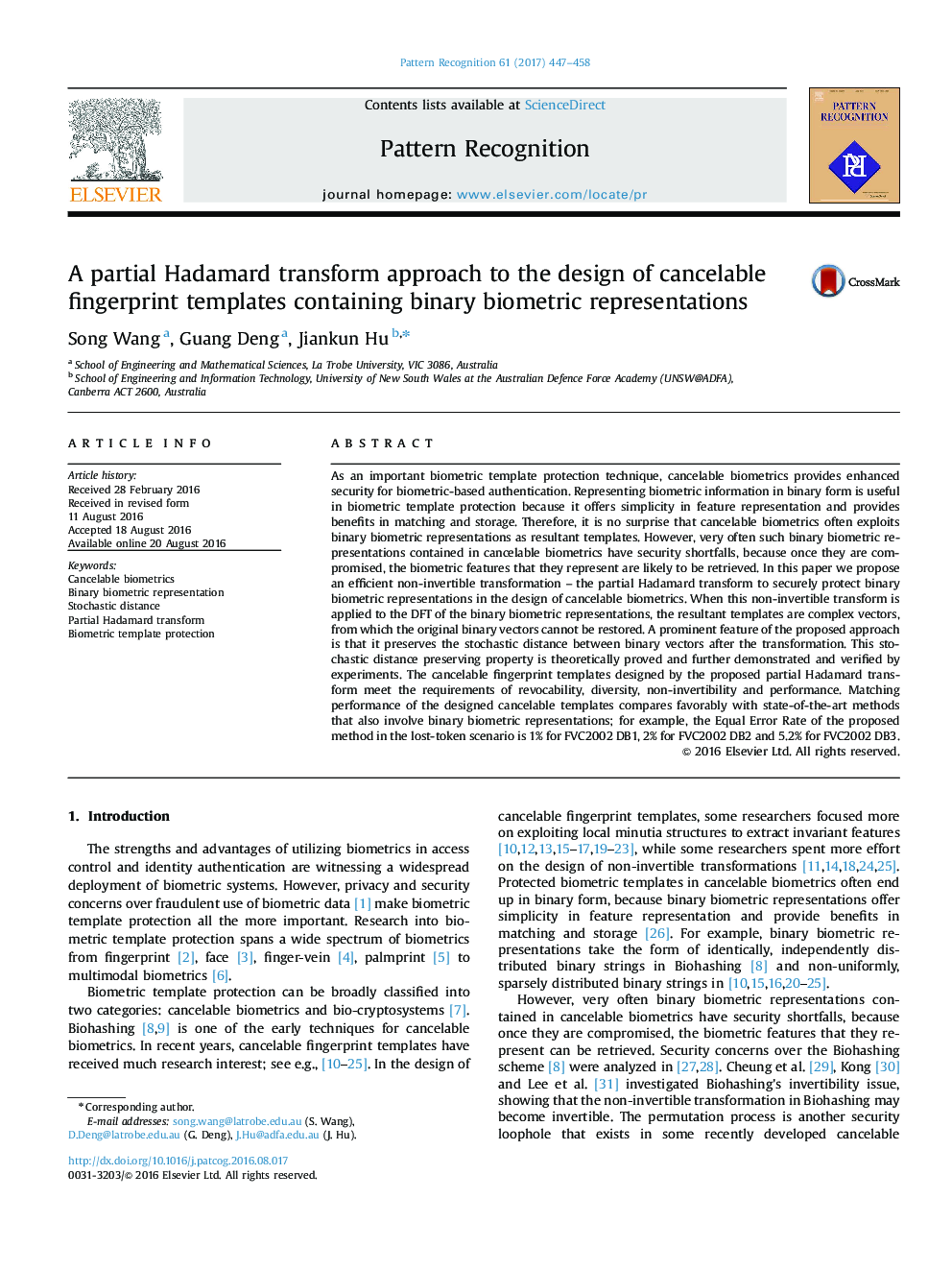| کد مقاله | کد نشریه | سال انتشار | مقاله انگلیسی | نسخه تمام متن |
|---|---|---|---|---|
| 6939732 | 870056 | 2017 | 12 صفحه PDF | دانلود رایگان |
عنوان انگلیسی مقاله ISI
A partial Hadamard transform approach to the design of cancelable fingerprint templates containing binary biometric representations
دانلود مقاله + سفارش ترجمه
دانلود مقاله ISI انگلیسی
رایگان برای ایرانیان
کلمات کلیدی
موضوعات مرتبط
مهندسی و علوم پایه
مهندسی کامپیوتر
چشم انداز کامپیوتر و تشخیص الگو
پیش نمایش صفحه اول مقاله

چکیده انگلیسی
As an important biometric template protection technique, cancelable biometrics provides enhanced security for biometric-based authentication. Representing biometric information in binary form is useful in biometric template protection because it offers simplicity in feature representation and provides benefits in matching and storage. Therefore, it is no surprise that cancelable biometrics often exploits binary biometric representations as resultant templates. However, very often such binary biometric representations contained in cancelable biometrics have security shortfalls, because once they are compromised, the biometric features that they represent are likely to be retrieved. In this paper we propose an efficient non-invertible transformation - the partial Hadamard transform to securely protect binary biometric representations in the design of cancelable biometrics. When this non-invertible transform is applied to the DFT of the binary biometric representations, the resultant templates are complex vectors, from which the original binary vectors cannot be restored. A prominent feature of the proposed approach is that it preserves the stochastic distance between binary vectors after the transformation. This stochastic distance preserving property is theoretically proved and further demonstrated and verified by experiments. The cancelable fingerprint templates designed by the proposed partial Hadamard transform meet the requirements of revocability, diversity, non-invertibility and performance. Matching performance of the designed cancelable templates compares favorably with state-of-the-art methods that also involve binary biometric representations; for example, the Equal Error Rate of the proposed method in the lost-token scenario is 1% for FVC2002 DB1, 2% for FVC2002 DB2 and 5.2% for FVC2002 DB3.
ناشر
Database: Elsevier - ScienceDirect (ساینس دایرکت)
Journal: Pattern Recognition - Volume 61, January 2017, Pages 447-458
Journal: Pattern Recognition - Volume 61, January 2017, Pages 447-458
نویسندگان
Song Wang, Guang Deng, Jiankun Hu,